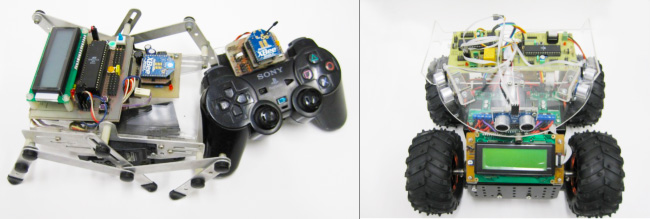Research Interest Group in “Photonics and Computer Simulation”
And God said, “Let there be light,” and there was light. (Genesis 1:3)
There are four major research topics:
Applied Laser Spectroscopy
We have reported in a series of publication the generation of secondary plasma having very low continuous emission background and additional characteristics favorable for spectrochemical analysis. Our further experiments reveal that the shock wave generated by the primary plasma is responsible for the formation of the secondary plasma as well as the excitation of the target atoms. Meanwhile we have also developed its application for in-situ analysis of large metallic surfaces in industry. In our continuing effort to deepen our understanding of the dynamical process of secondary plasma formation as well as to broaden its range of application and improve its practically including its portability, we are currently undertaking the quantitative analysis using high power pulsed laser applied in mining, rocks and fossil analysis, food inspection, biochemical analysis, surgery, etc.

Principal Investigator:
Rinda Hedwig (rinda@binus.edu)
![]()
Compressive of Sensing: When Sensing Meet Compression
Compressive Sensing is a novel signal acquisition method that offers joint sensing and compression where perfect reconstruction of signal can be made form far fewer samples / measurement than traditional Shannon-Nyquist sampling theorem. Applications and opportunities: (1) New Analog-to-Digital Converter (Analog to Information); (2) One Pixel Camera; (3) Fast Magnetic Resonance Imaging (Fast – MRI); (4) Space Exploration; (5) Optimized Compressive Sensing.
Principal Investigator:
Oey Endra (endraoey@binus.edu)
![]()
Computational Intelligence
Nature-inspired computational methodologies and approaches to address complex problems of the real world applications to which traditional methodologies and approaches are ineffective or infeasible. In Computational Intelligence for Semistructured System we focus on Metabolic pathways, social Network and also with Software Engineering. Some recent research that we report it include Pathways Network between Acid and protein-protein interaction, include with coding and signaling regulatory networks, as well as for robot application.

- Principal Investigator:
Ford Lumban Gaol (flgaol@binus.edu) - Principal Investigator for Robot:
Rudy Susanto (rsusanto@binus.edu)
![]()
Dynamic Simulation Model for Business Decision Making
Business models systems are characterized by complex structure and dynamic behavior. It’s often difficult to predict or trace the consequences of certain decisions due to the existence of delays, non-linearities and causal feedback inherent to such systems, in other words, the effect of making a decision in one part of the business function can manifest itself in another part of the business system at an unexpected time. There’s a widely held belief that System Dynamics is the only knowledge based way for challenging the increasing complexity of decision making in general and the best solution to avoid unintended consequences.
Principal Investigator:
Togar Alam Napitupulu
- Research published in
- Japanese Journal of Applied Physics;
- Spectrochimica Acta Part B;
- Applied Spectroscopy;
- Journal of Applied Physics;
- Applied Physics B;
- Analytical Chemistry;
- Analytical and Bioanalytical Chemistry;
- IEEE Transaction of Information Science and Application;
- Journal of Bioinformatics;
- Journal of Mathematics and Statistics;
- International Journal of Quality, Statistics, and Reliability;
- International Review on Computers and Software
- Collaboration with Maju Makmur Mandiri Research Center (http://www.mmmfoundation.org)
- Grants accepted from
- The Abdus Salam International Center for Theoretical Physics – Trieste;
- Int. Research & Advanced Science and Technology – USA;
- Hong Kong Association for Manufacturing

Comments :